[ANSWERED] What's Considered a Hostile Work Environment?
So what’s considered a hostile work environment? The best way to determine this is to take a look at real-world cases and actual laws surrounding it.

Deciphering whether a company’s work culture or environment is the right fit for you is one of the most crucial parts of the job selection process. But I’m not just saying that 66% of people looking for a job agree that culture is vital during their career determination. Unfortunately, though, the environment isn’t something you’re able to fully grasp right off the bat.
The people you surround yourself with have an impact on your mental well-being. Burnout, depression, and regret are words commonly used to describe what employees experience in today’s workforce. I would even argue to include the word “toxic” as well.
22% of Americans say that they face a hostile work environment.
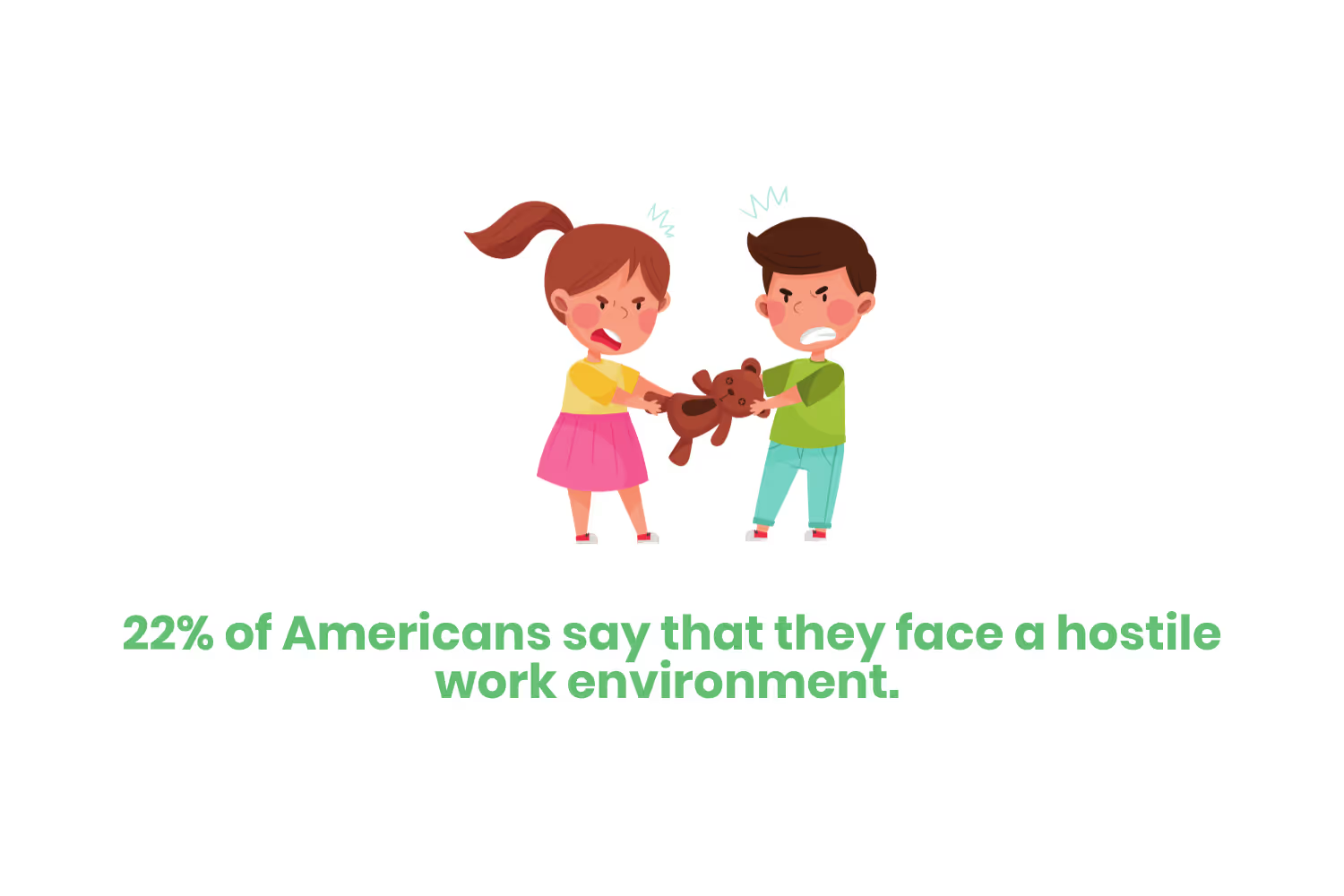
That’s a pretty significant chunk of Americans. While reading this blog post, you might start evaluating your own work environment and wonder if you’re experiencing a hostile work environment. A few bad apples might come to mind but let’s not name any names here (save that for your manager).
While every employee has the right and deserves to experience a work environment that’s comfortable, it’s not always realistic. Why you may ask? The short answer; we’re all human.
When we surround ourselves with the same people every day, the chances of an argument happening or an instance where someone may unintentionally hurt another’s feelings increase. While human resources experts may not view such instances as ethical or kind, these don’t constitute a hostile work environment according to state laws.
So what’s considered a hostile work environment? The best way to determine this is to take a look at real-world cases and actual laws surrounding it.
Hostile Work Environment Defined
James J. McDonald Jr., SHRM-SCP, says, “A hostile working environment has a narrow legal definition, and what most employees think is a hostile working environment is usually not.".
At this point, I feel like starting with what a hostile work environment is not might be the easiest way to begin our understanding of the term. A hostile work environment is not just angry or aggressive behavior. While these emotions can very much exist within a hostile environment setting, these factors alone cannot legally prove a hostile environment.
It’s also worth mentioning that a hostile work environment isn’t only created by someone in upper management. Anyone can create a hostile work environment, no matter their level of authority within a company. This includes employees, clients, customers, patients, third parties, etc.
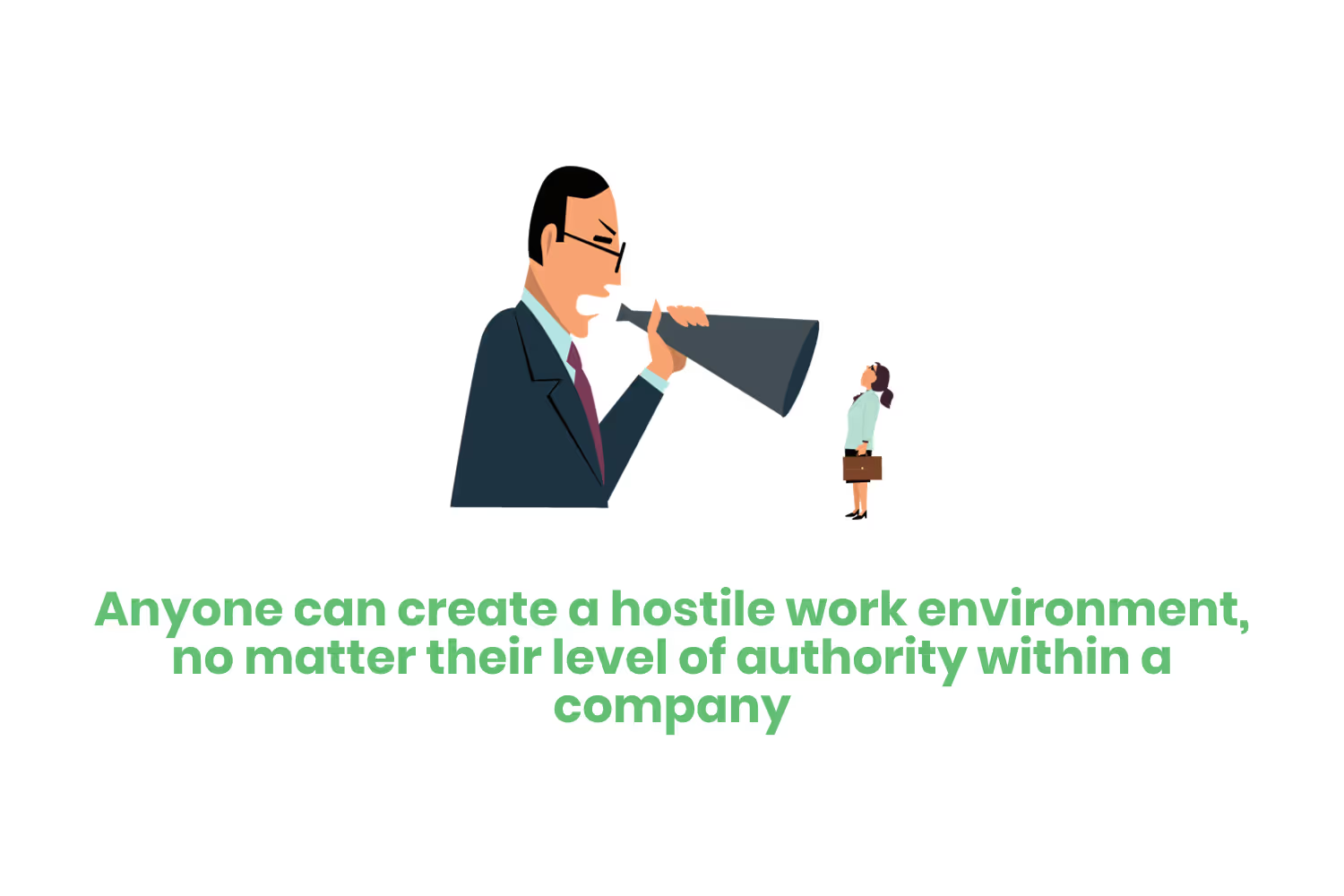
Additionally, a hostile work environment is not just an in-person occurrence. Hostile work environments can exist virtually or outside of the typical workplace setting and work hours. It can take place through instant messaging, video conferencing, phone calls, and more.
A hostile work environment happens when unwelcome conduct, harassing or discriminatory, is so severe that it affects one’s ability to perform their job responsibilities comfortably. Signs of a hostile work environment are mental anguish from the victims as a result of the unwelcome behavior. Employees may feel uncomfortable, intimated, anxious, or all of the above when experiencing a hostile work environment.
We may have heard the term hostile work environment used to describe one of the common types of sexual harassment in the workplace- the other being Quid Pro Quo.
Real-World Example of Sexual Harassment
The best way to understand what kind of conduct qualifies as sexual harassment is by looking and learning from a real-world example.
One of the most recent examples of sexual harassment that grabbed headlines surrounds the singer Lizzo. On August 2, 2023, three professional dancers named Lizzo, her dance captain Shirlene Quigley and Big Grrrl Touring, Inc. in a lawsuit surrounding a hostile work environment and sexual harassment.
The three dancers who started the lawsuit were a part of Lizzo’s Special tour that started in September of 2022. The lawsuit alleged that the dancers experienced a grueling 12-hour dance rehearsal. It was so physically and emotionally intense that one of the dancers was afraid to leave to use the restroom that she soiled herself.
On September 21, 2023, an employee who worked on the tour filed another lawsuit against Lizzo’s touring company. This employee worked as a stylist on the tour and cited instances of racial and sexual harassment, disability discrimination, illegal retaliatory termination, and assault. There’s a lot to unpack in this lawsuit, but for the scope of this blog let’s take a look at the sexual harassment allegations aspect. The alleged sexual harassment that the stylist endured involved a 30-person group text that “included graphic and disturbing images of male genitalia.”
At the time of writing this blog, both lawsuits are still ongoing, but they’re both great examples of what constitutes a hostile work environment and sexual harassment.
Real-World Example of Quid Pro Quo
Now let’s transition to a real-world example of a lawsuit that cited quid pro quo.
San Bernardino County had to pay a $3 million settlement over a sexual harassment case that involved a public defender’s office.
The 2021 lawsuit that led to the settlement contained serious allegations that involved both sexual harassment and quid pro quo. Similarly to the lawsuits that involved Lizzo, there’s a lot to unpack. For the scope of this blog, let’s look at what specifically happened surrounding the quid pro quo allegations.
This lawsuit accused male employees of forcing female employees to perform oral sex. It also cited a situation where the former Public Defender, Gregory Christopher Gardner, would offer job benefits in exchange for sexual favors.
This court case is a clear-cut example of quid quo pro.
State Standards
Legally in order to claim a hostile work environment, there are certain qualifications that need to exist.
Here are common indicators that an employee or employees that signify experiencing a hostile work environment:
- Discriminatory behavior exists
- Unwelcome conduct continuously happens
- The conduct targets a particular protected group
- A protected group is a group of legally protected people. They cannot face harassment or harm. Examples of protected groups include gender, race, age, religion, and disability status.
- The victim(s) must endure this behavior in order to keep their job
- The harassment is “severe or pervasive enough” that an average person would consider it intimidating and/or abusive.
Every state is different and each has its own laws on how to determine a hostile work environment. In some states, a single offensive remark can rise to the level of a hostile environment. In New York, harassment must exceed a “petty slight” or “trivial inconvenience” to qualify.
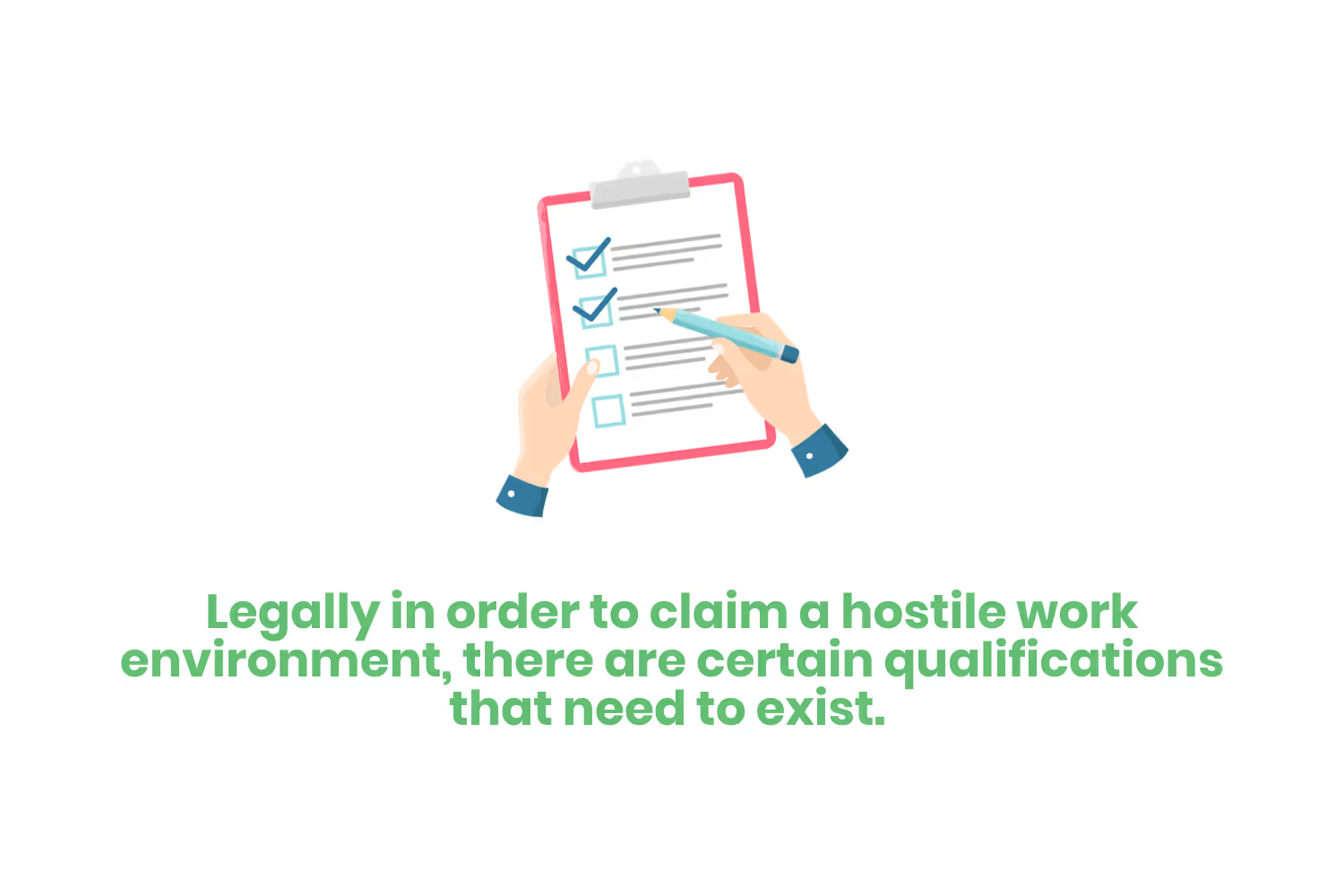
Example Qualifying Scenarios
Now that we have an understanding of what a hostile environment is and can legally constitute when it might occur, let’s put our knowledge to the test.
Scenario 1
Say that you’re a leading sales representative at your company. Today you have a pretty important meeting with a potential client that’s looking to do business. It’s a pretty big opportunity so you have a few other people from your company joining in on this meeting. You decide with the interested client to meet at a local coffee shop to discuss interests. On your way to the meeting, traffic is a bit stuffy due to a fender bender. For this reason, you’re about 10 minutes late to the meeting. When you arrive, your supervisor gives you quite a dirty look as you apologize to the client for your tardiness. The meeting goes well but afterwards, your boss pulls you aside and calls you an “idiot”. The rest of the day he’s short with you.
Is this a hostile work environment?
The answer is no. Why? Name-calling that falls short of extreme behavior does not qualify as a hostile work environment indication. Because the name-calling was a one-time occurrence as well it would not be enough to report a hostile work environment.
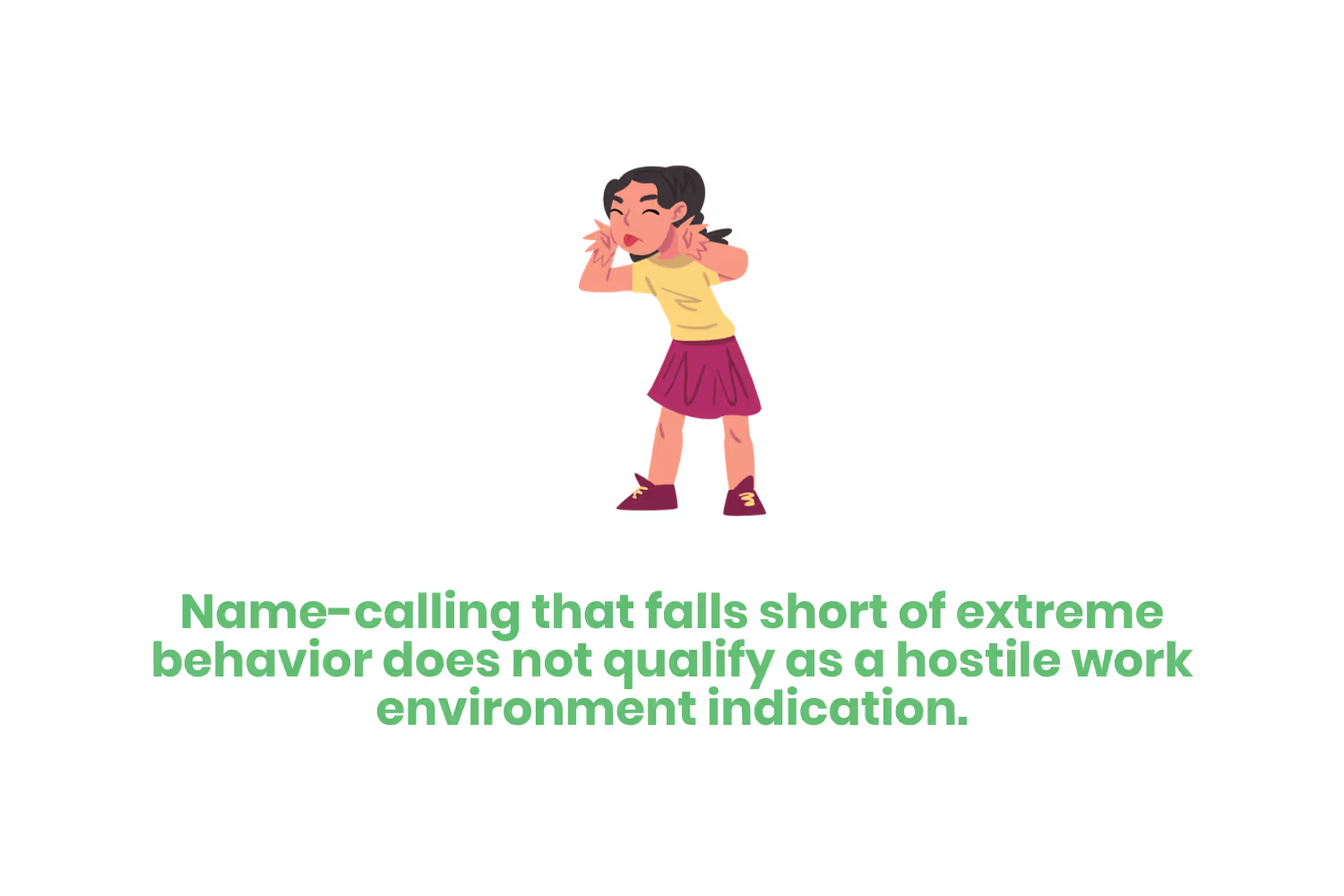
Scenario 2
Imagine that you’re an intern in your early 20’s and you received your first real job offer out of college. You’re pretty excited about the opportunity until you meet your supervisor. As your internship continues they continuously make derogatory comments concerning your age toward you. You find these jokes belittling. You feel that your supervisor isn’t taking any of your inputs seriously and brushes them off due to your age.
Is this a hostile work environment?
Did you think Yes? You’re correct! This example is an instance of a hostile work environment for multiple reasons. The key word here is “continuously”. The hostility is continuously happening. The jokes that your supervisor is making are also targeting a protected group: age. Big mistake.
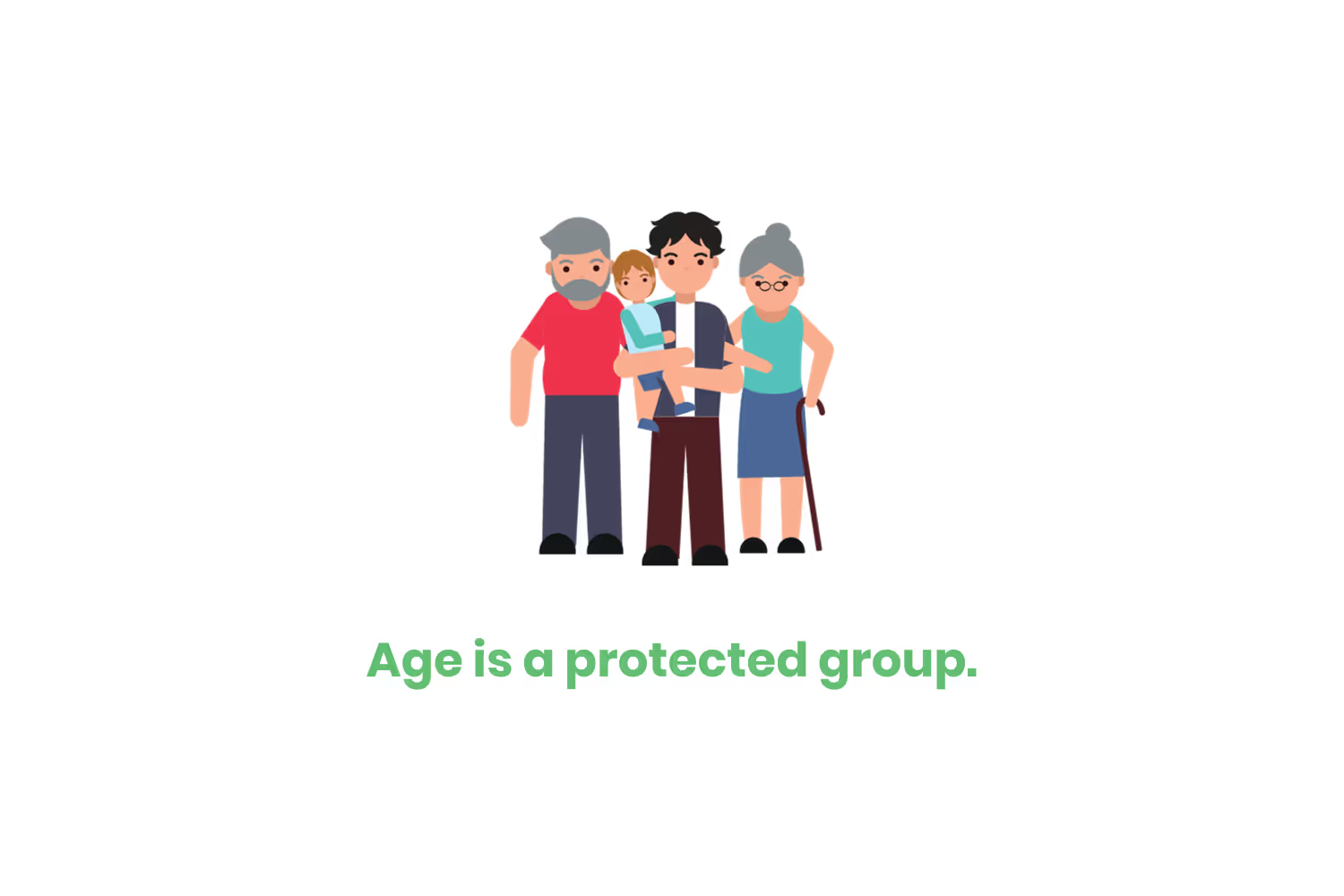
Scenario 3
Let’s say that you’re working at a company that recently hired a new manager to oversee your department. In comparison to your previous manager, you can say that this person’s quite the micromanager. This new manager isn’t afraid to critique the work that you send over to him or question your work ethic. You begin to feel frustrated as you feel that your manager is monitoring everything you do and has pretty strict regulations regarding working from home and meeting organizational standards. Is this a hostile environment?
Micromanagement may not be ideal for most, but it does not alone fall under the scope of qualifying as a hostile work environment.

Scenario 4
There’s an employee that you work with that has a disability. There are a few coworkers that work closely with this employee. These coworkers make rude comments toward this person and question their ability to complete job responsibilities. Oftentimes, they assign her the work that they don’t want to complete and tasks that are beyond her capabilities.
Is this a hostile environment?
The answer here is yes. This scenario is an example of both a hostile and discriminatory environment. People with disabilities are a part of a protected group.
Now, a disabled employee may be closely monitored by a manager or coworker. While this may be insensitive, it’s not a hostile environment unless there are factors of discrimination similar to the case scenario above.
Scenario 5
For our last scenario, picture that you’re in a male-dominated workplace. There is a group of men who frequently make inappropriate sexual remarks about fellow female coworkers. There’s one female coworker in particular that some of the men have persisted in making sexual advances toward her even after her objections. They even went as far as follow her on her personal social media pages and direct message her with suggestive emojis.
Is this a hostile work environment?
The answer to this scenario is yes. This is a clear example of sexual harassment that’s creating a hostile work environment for female employees. Due to the male’s inappropriate sexual remarks and advances, they don’t feel comfortable or safe in and out of the workplace.
All of these scenarios we just went through exemplify wrong behavior. While all of these might not be the right way to go about professional setting situations, not all of them are enough to report a hostile workplace legally.
If you believe that you’re experiencing a hostile work environment, it’s important to report it to your employer or Human Resources. Employers could face liability for harassment if they were aware or reasonably should have been aware of its occurrence and did not take appropriate steps to halt it, regardless of whether the harassment occurred on or off the work premises.
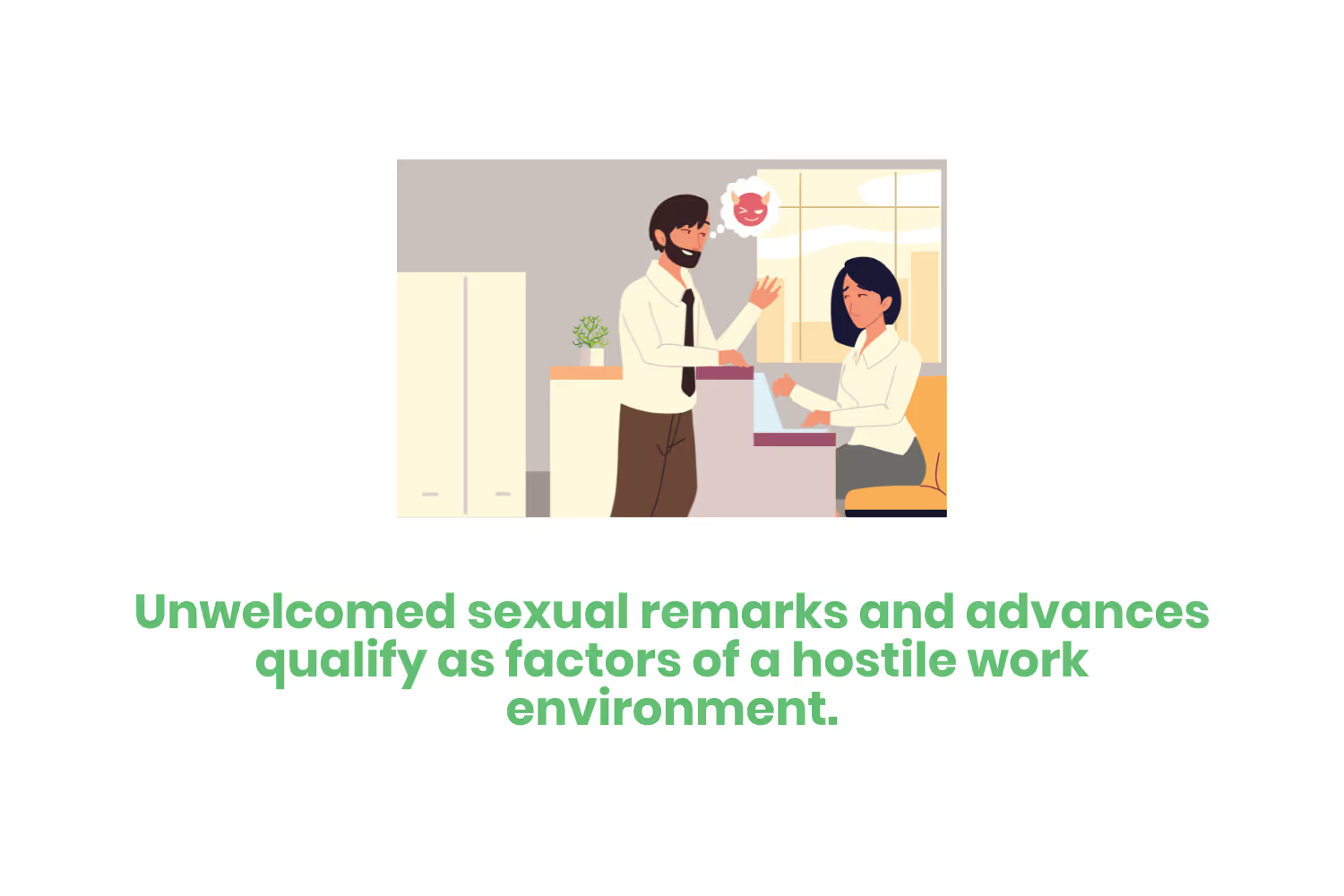
Conclusion
A hostile work environment is a common term that people use to describe where they work. As stated previously, 20% of Americans believe that they face a hostile work environment.
When occurring, it can negatively impact an employee’s mental well-being which can result in mental anguish such as depression, anxiety, and burnout. After all, just over 20% of workers admit experiencing harm to their mental health while at work.
Bad behaviors are never justified in the workplace, but the instance might not be enough to legally proclaim a hostile work environment.
Knowing how to decipher whether a hostile work environment exists and what it looks like legally isn’t always easy. But, it’s an essential skill in today’s workforce. The best way to invoke this knowledge in your workforce is through harassment training. Many organizations require that their new employees take a series of anti-harassment training once they start. Sometimes state governments mandate such training.
Employers, employees, and third parties alike should be aware of how to promote a healthy and comfortable workplace setting.
Emphasize your product's unique features or benefits to differentiate it from competitors
In nec dictum adipiscing pharetra enim etiam scelerisque dolor purus ipsum egestas cursus vulputate arcu egestas ut eu sed mollis consectetur mattis pharetra curabitur et maecenas in mattis fames consectetur ipsum quis risus mauris aliquam ornare nisl purus at ipsum nulla accumsan consectetur vestibulum suspendisse aliquam condimentum scelerisque lacinia pellentesque vestibulum condimentum turpis ligula pharetra dictum sapien facilisis sapien at sagittis et cursus congue.
- Pharetra curabitur et maecenas in mattis fames consectetur ipsum quis risus.
- Justo urna nisi auctor consequat consectetur dolor lectus blandit.
- Eget egestas volutpat lacinia vestibulum vitae mattis hendrerit.
- Ornare elit odio tellus orci bibendum dictum id sem congue enim amet diam.
Incorporate statistics or specific numbers to highlight the effectiveness or popularity of your offering
Convallis pellentesque ullamcorper sapien sed tristique fermentum proin amet quam tincidunt feugiat vitae neque quisque odio ut pellentesque ac mauris eget lectus. Pretium arcu turpis lacus sapien sit at eu sapien duis magna nunc nibh nam non ut nibh ultrices ultrices elementum egestas enim nisl sed cursus pellentesque sit dignissim enim euismod sit et convallis sed pelis viverra quam at nisl sit pharetra enim nisl nec vestibulum posuere in volutpat sed blandit neque risus.

Use time-sensitive language to encourage immediate action, such as "Limited Time Offer
Feugiat vitae neque quisque odio ut pellentesque ac mauris eget lectus. Pretium arcu turpis lacus sapien sit at eu sapien duis magna nunc nibh nam non ut nibh ultrices ultrices elementum egestas enim nisl sed cursus pellentesque sit dignissim enim euismod sit et convallis sed pelis viverra quam at nisl sit pharetra enim nisl nec vestibulum posuere in volutpat sed blandit neque risus.
- Pharetra curabitur et maecenas in mattis fames consectetur ipsum quis risus.
- Justo urna nisi auctor consequat consectetur dolor lectus blandit.
- Eget egestas volutpat lacinia vestibulum vitae mattis hendrerit.
- Ornare elit odio tellus orci bibendum dictum id sem congue enim amet diam.
Address customer pain points directly by showing how your product solves their problems
Feugiat vitae neque quisque odio ut pellentesque ac mauris eget lectus. Pretium arcu turpis lacus sapien sit at eu sapien duis magna nunc nibh nam non ut nibh ultrices ultrices elementum egestas enim nisl sed cursus pellentesque sit dignissim enim euismod sit et convallis sed pelis viverra quam at nisl sit pharetra enim nisl nec vestibulum posuere in volutpat sed blandit neque risus.
Vel etiam vel amet aenean eget in habitasse nunc duis tellus sem turpis risus aliquam ac volutpat tellus eu faucibus ullamcorper.
Tailor titles to your ideal customer segment using phrases like "Designed for Busy Professionals
Sed pretium id nibh id sit felis vitae volutpat volutpat adipiscing at sodales neque lectus mi phasellus commodo at elit suspendisse ornare faucibus lectus purus viverra in nec aliquet commodo et sed sed nisi tempor mi pellentesque arcu viverra pretium duis enim vulputate dignissim etiam ultrices vitae neque urna proin nibh diam turpis augue lacus.




